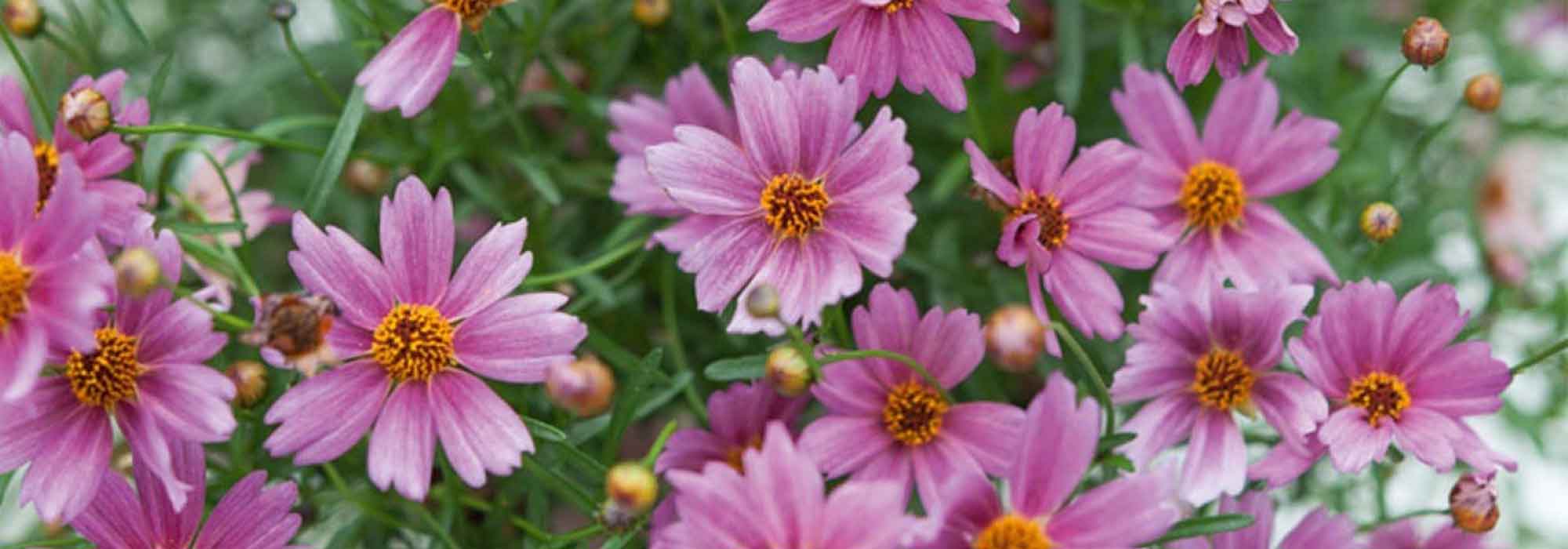
Pairing ideas with Coreopsis
6 ideas to invite Coreopsis into your garden
Contents
You may not be familiar with Coreopsis, perennial plants known for their abundant and long-lasting flowering. Cultivate them without delay. Easy to grow both in the ground and in pots, Coreopsis deserves a prominent place in your green space. Once established in the sun, they will ensure uninterrupted flowering throughout the summer and into autumn. Hardy, they are suitable for all gardens across the country. Whether alone or in combination, with bright and varied colours, discover our varieties of Coreopsis and let yourself be inspired by these combinations to recreate on your balcony, terrace, or in your garden.
In a yellow garden
Want to create a monochrome yellow bed in a corner of your garden? This is entirely possible by combining medium-sized Coreopsis such as grandiflora ‘Sonnenkind’ or ‘Louis d’Or’, with bright flowers alongside Solidagos that have a feathery flowering and Rudbeckias fulgida ‘Forever Gold’, with sunny flowers. Pair them with a few stems of Achillea ‘Credo’ that develop tall stems with flat umbels of cream-yellow and sulphur-yellow flowers. In the foreground, plant Sedums spathulifolium ‘Purpureum’ with rosettes that take on purple hues and are covered in small bright yellow flowers. This bed of perennial plants, with its charming shades of yellow, will brighten your garden for many years to come.

Coreopsis grandiflora ‘Sonnenkind’, Achillea ‘Credo’, Coreopsis grandiflora ‘Louis d’Or’, Sedum spathulifolium ‘Purpureum’, Rudbeckia fulgida ‘Forever Gold’ and Solidago ‘Gold King’ (from left to right and top to bottom)
If you fancy the yellow colour, discover our guide on 10 perennial plants with yellow flowers to add to the garden and 10 bushes with golden yellow foliage to brighten the garden.
Read also
Coreopsis : to sow, to plant, to growIn a summer planter
Play with the yellow of Coreopsis to bring light to a display created in a pot, container, or window box. Use medium-sized varieties like ‘Sunray’, with daisy-shaped flowers that bloom from June to October, or ‘Early Sunrise’ featuring double golden-yellow heads that attract butterflies. Add contrast with the striking foliage of grasses such as Carex ‘Everest’, with its blue-green ribbon-like leaves, or ‘Evergold’, featuring trailing green leaves highlighted with a broad cream-yellow stripe. To multiply the hues, complete the window box with touches of purple by placing wall bellflowers or Carpathian bellflowers at the ends, which have a trailing habit.

Campanula carpatica, Carex ‘Evergold’, Coreopsis ‘Early Sunrise’, Coreopsis ‘Sunray’, Carex ‘Everest’ and Campanula muralis (from left to right and top to bottom)
Discover more foliage shades with our articles on 7 stunning purple-leaved perennials and 10 stunning perennials with golden or yellow foliage
Discover other Coreopsis - Tickseed
View all →Available in 1 sizes
Available in 1 sizes
Available in 1 sizes
Available in 2 sizes
Available in 1 sizes
Available in 2 sizes
Available in 1 sizes
Available in 1 sizes
Available in 2 sizes
Available in 1 sizes
In a wild garden
Invite lightness and poetry into a wild flowerbed, suitable for both naturalistic and contemporary gardens. Combine original varieties of perennial Coreopsis such as ‘Ruby Red’ with its single star-shaped ruby red flowers or ‘Desert Coral’, featuring peachy salmon flowers that deepen to red over time, alongside Stipas tenuifolia, grasses with silky, light tufts. Add Panicum virgatum like ‘Kulsenmoor’ with green foliage that turns red in autumn, and shorter Miscanthus sinensis varieties like ‘Adagio’. To complete the small touches of colour, feel free to include Achillea millefolium ‘Cerise Queen’ with its feathery foliage and cherry pink flowers.
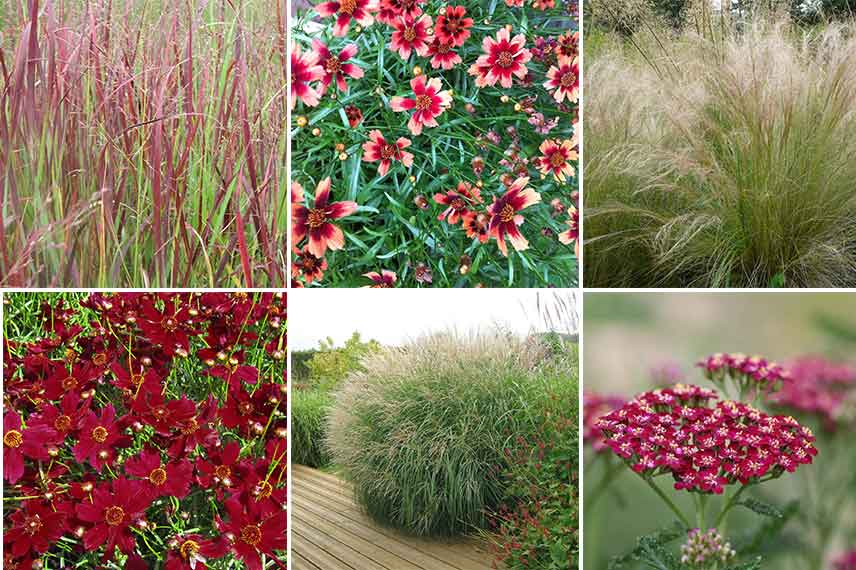
Panicum virgatum ‘Kulsenmoor’, Coreopsis ‘Desert Coral’, Stipa tenuifolia, Coreopsis ‘Ruby Red’, Miscanthus sinensis ‘Adagio’ and Achillea millefolium ‘Cerise Queen’ (from left to right and top to bottom)
To enhance the wild aspect of your flowerbeds, discover our guide Natural garden, 5 remarkable wild plants
Read also
Choosing a CoreopsisIn a dry garden
Create a dry garden, rock garden, or gravel garden by planting Coreopsis verticillata in such original shades as yellow with a mahogany-red centre with ‘Bengal Tiger’ or ‘Limerock Passion’ with magenta-pink flowers. Add a touch of exoticism with Yuccas filamentosa ‘Bright Edge’ with green foliage marginate in yellow and white, planted near large rocks. To densify this bed, plant several clumps of Sedum groundcover, a succulent plant with semi-evergreen foliage, very hardy and appreciating all types of soil, even poor. This way, you will enjoy this dry garden, which requires little care, all year round.
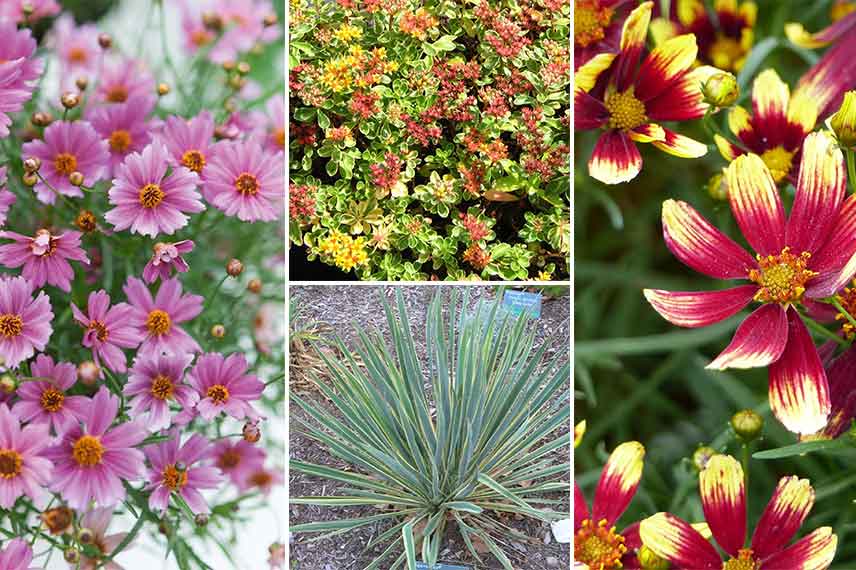
Coreopsis ‘Limerock Passion’, Sedum kamtschaticum, Yucca filamentosa ‘Bright Edge’ and Coreopsis verticillata ‘Bengal Tiger’ (from left to right and top to bottom)
Discover our article on Sedum: 7 species and varieties of groundcover
In a pink garden
Dare to create a monochrome pink and purple bed along a house or at the back of the garden. In the foreground, mix shorter plants like hardy geraniums ‘Rozanne’ with Coreopsis rosea ‘American Dream’. In the background, invite Buenos Aires verbenas and Agastaches ‘Blue Boa’, with their airy flowers that add elegance to the bed. To enhance the verticality of the bed, add Perovskias that can reach up to 1.20 m in height, such as ‘Blue Spire’ and Eupatorium maculatum ‘Atropurpureum’, with their light umbels that can exceed 2 metres in height.

Agastache ‘Blue Boa’, Coreopsis rosea ‘American Dream’, Verbena bonariensis, Geranium ‘Rozanne’, Eupatorium maculatum ‘Atropurpureum’ and Perovskia ‘Blue Spire’ (from left to right and top to bottom)
For rose lovers, here are some advice sheets to add a few bushes to this bed: 10 shrub roses with pink flowers and 10 pink flowering groundcover roses
In a flower meadow to create cut flower arrangements
To occupy an unused plot of land, create a vibrant flower meadow by crafting a patchwork of plants. Coreopsis fits perfectly with the yellow of the variety ‘Badengold’, the red of ‘Ruby Red’, and many other surprising shades. Also try the experience with Coreopsis tinctoria, an annual. Accompany them with mountain bluebell plants like ‘Amethyst in Snow’, which offer wildflower blooms, and medium-sized Heleniums to complete this bed, which can be used for creating naturalistic bouquets. Sprinkle in some multicoloured annuals like Cosmos or Zinnias, and you, along with pollinating insects, will enjoy this sea of flowers.
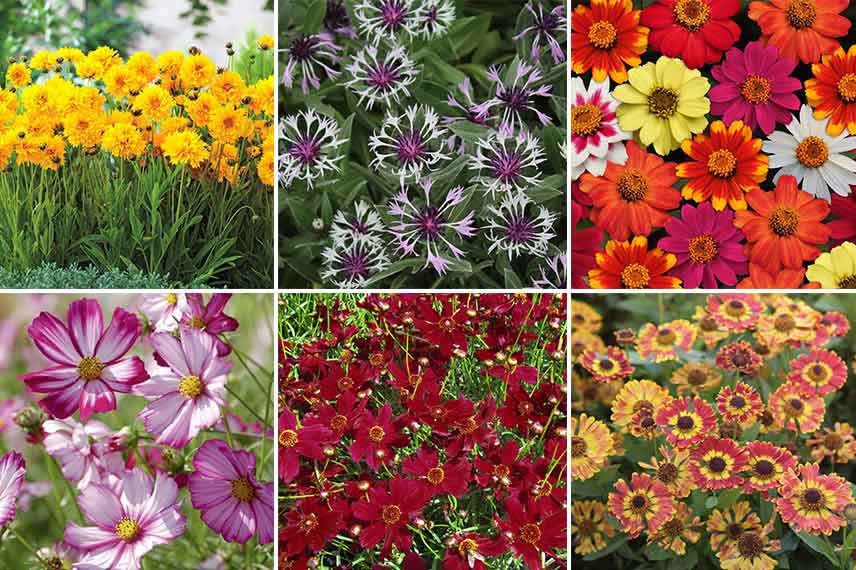
Coreopsis grandiflora ‘Badengold’, Centaurea ‘Amethyst in Snow’, Zinnia, Cosmos, Coreopsis ‘Ruby Red’ and Helenium (from left to right and top to bottom)
For further reading
- Everything you need to know about Coreopsis with our guide Coreopsis: sowing, planting, growing.
- To avoid any failures, we recommend planting appropriately; feel free to adopt our Plantfit web application!
- Subscribe!
- Contents
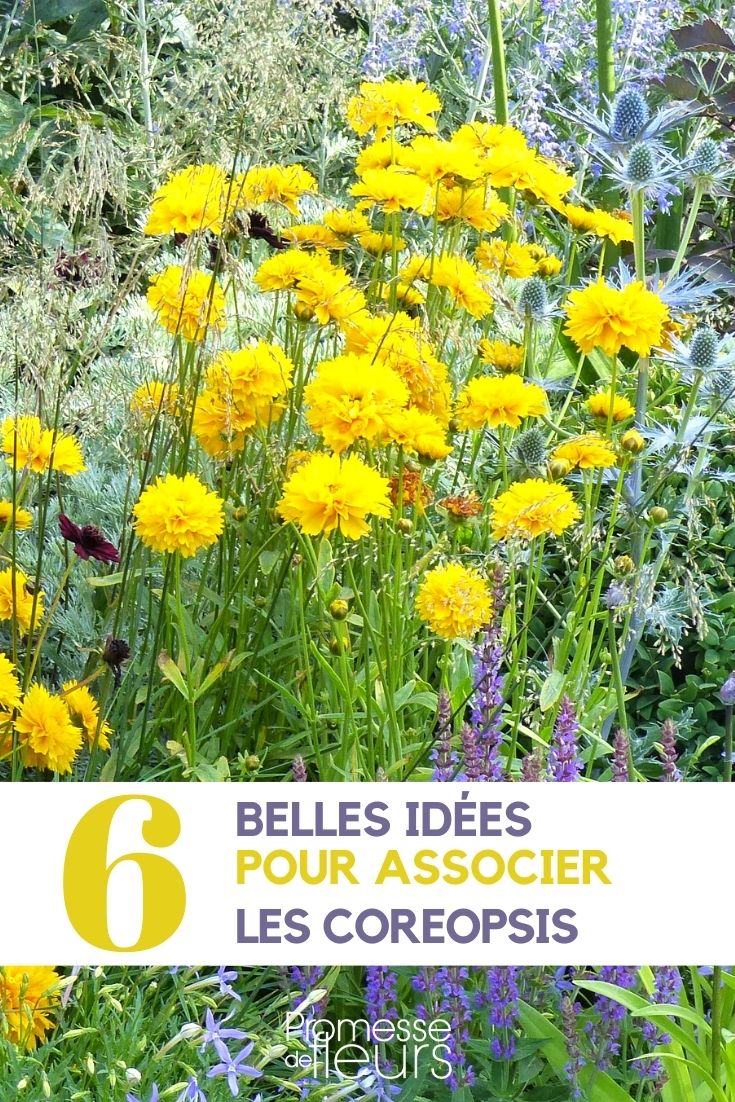































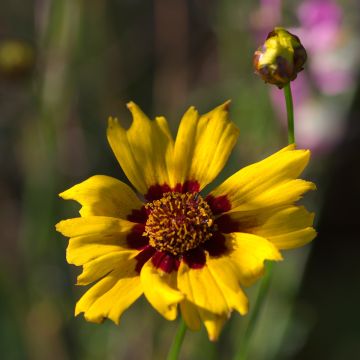
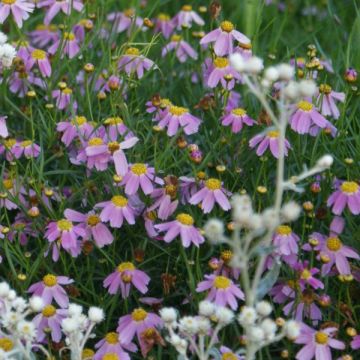


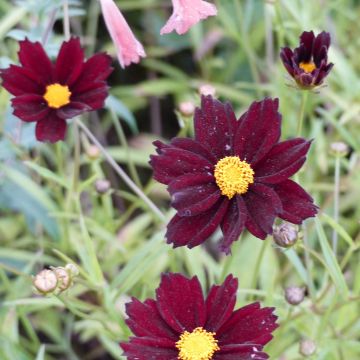



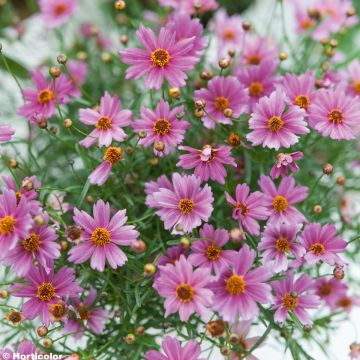
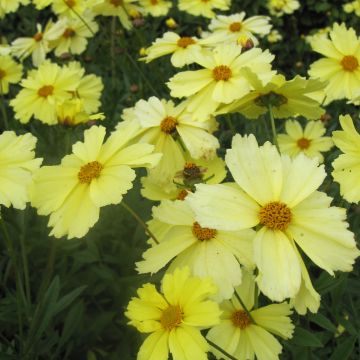
Comments